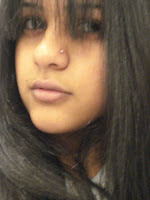This past week the death of Pakistani-Canadian teen, Aqsa Parvez, has been in the news in Canada. This terrible tragedy has made headlines because of the nature of her death – she was strangled to death by her own father in their Mississauga, Ontario home. Before I say anymore I would like to pray that God bless her soul and grant her paradise. Inna lillahi wa inna ilaihi rajioon (meaning: Verily we belong to Allah, and to Allah we return). I would also like to join the many other voices out there that have absolutely, under no uncertain terms, condemned this horrific murder. May she rest in peace. 
Aqsa, a Muslim girl of 16, was said to have had trouble with her family. The reports from her friends demonstrate that there was a large rift between herself and her parents. According to news reports, her parents wanted her to dress in what they felt was proper Islamic attire, whereas she wanted to wear more Western style clothing and integrate with her non-Pakistani, non-Muslim friends. It appears that her family had a great deal of trouble with this and the result was the tragedy of her murder.
When we speak of Islamic dress the piece of clothing which gets the most attention is the hijab. Many have reported that the arguments between Aqsa and her family were often about the hijab as Aqsa, who at one point wore the hijab, had decided to remove it. Her family wanted her to wear it.
The media of course has been all over this case and all over the hijab. I cannot blame them though. Anytime a parent kills their child it does tend to make the news. However, the hyper focus on the hijab has been frustrating. Just some of the articles include Girl, 16, dies after hijab dispute with father, Father says killed daughter in hijab case , Dad charged after daughter killed in clash over hijab. This is especially frustrating as at this point we are not clear on the motive. Disagreements on Islamic clothing as motive are only speculations based on accounts by Aqsa’s friends. However, most media stories have appeared to focus mainly on the Islamic clothing, namely hijab, issue. One article in The National Post even has as, its picture, the eyes of a niqabi woman, even though the niqab has not once been mentioned in this whole tragedy. Not to mention that this particular story is entitled The deadly face of Muslim extremism. The content of the article focuses on the messages being given to Muslims about the proper attire for a Muslim woman, and although they make some relevant points, the argument is lacking and the title inaccurate. Such titles only work to further reinforce a fear of those “crazy Muslims.” The article furthers this fear by stating that the messages in mosques are the cause of such acts. Although one may say that the messages about proper female attire may be questionable, I think insinuating that mosques condone killing one’s children if they do not conform is a dangerous and inaccurate accusation.
From the news reports it would appear that the main reason Aqsa was killed and the main reason there was a clash between her and her family was that she did not dress Islamically enough for her family. Obviously, as this is the only lead the media has, they are taking it and running with it. And I have no doubts that this indeed was a point of argument in her home. However, this, to me, seems to be an insufficient and shallow explanation. Additionally, this focus may take away from another problem which may be more relevant and which the media has shed some light on – that of cultural integration of immigrant parents and their children and cultural clashes which result.
Aqsa’s family was from a strongly patriarchal culture but was living in one in which patriarchy is challenged at every step.* Her family was from a culture in which children do as their parents say because, due to their collectivist culture, they are expected to place the needs of others (especially family) above themselves, even if it means sacrificing their happiness. However, they were living in an individualist culture in which each person’s uniqueness and individuality is emphasized and praised. Many children of immigrants find themselves juggling these two dimensions.
